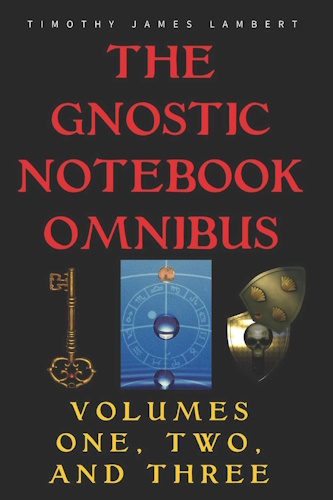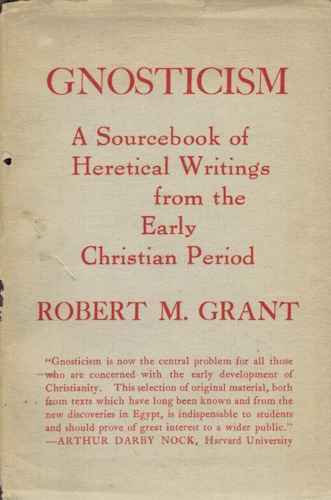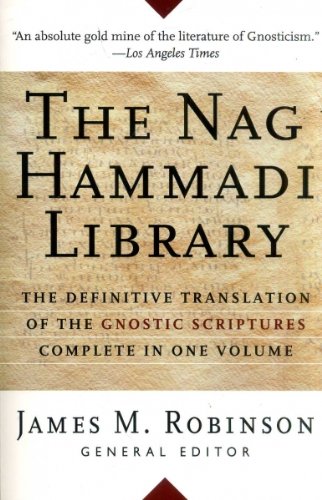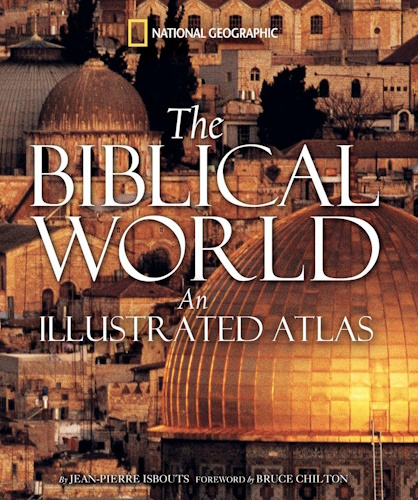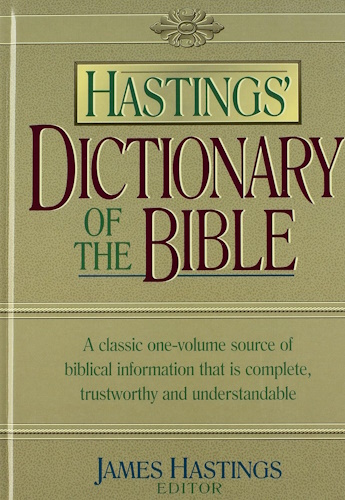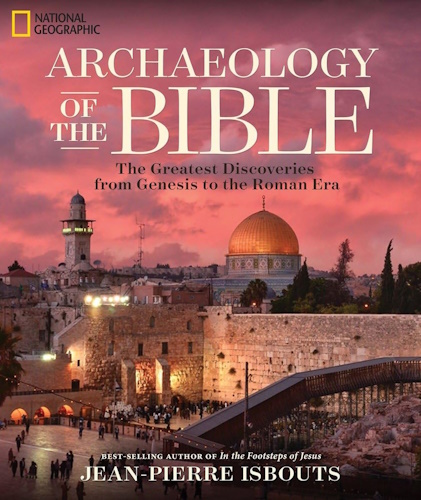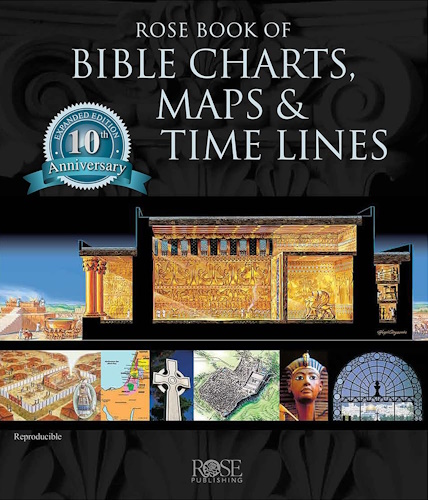
Eugnostos The Blessed
Translated by Douglas M. Parrott
(combining Codex III,3 and V,1)
Eugnostos, the Blessed, to those who are his.
Rejoice in this, that you know. Greetings! I want you to know that all men born from the foundation of the world until now are dust. While they have inquired about God, who he is and what he is like, they have not found him. The wisest among them have speculated about the truth from the ordering of the world. And the speculation has not reached the truth. For the ordering is spoken of in three (different) opinions by all the philosophers; hence they do not agree. For some of them say about the world that it was directed by itself. Others, that it is providence (that directs it). Others, that it is fate. But it is none of these. Again, of three voices that I have just mentioned, none is true. For whatever is from itself is an empty life; it is self-made. Providence is foolish. Fate is an undiscerning thing.
Whoever, then, is able to get free of these three voices I have just mentioned and come by means of another voice to confess the God of truth and agree in everything concerning him, he is immortal dwelling in the midst of mortal men.
He-Who-Is is ineffable. No principle knew him, no authority, no subjection, nor any creature from the foundation of the world, except he alone. For he is immortal and eternal, having no birth; for everyone who has birth will perish. He is unbegotten, having no beginning; for everyone who has a beginning has an end. No one rules over him. He has no name; for whoever has a name is the creation of another. He is unnameable. He has no human form; for whoever has human form is the creation of another. He has his own semblance - not like the semblance we have received and seen, but a strange semblance that surpasses all things and is better than the totalities. It looks to every side and sees itself from itself. He is infinite; he is incomprehensible. He is ever imperishable (and) has no likeness (to anything). He is unchanging good. He is faultless. He is everlasting. He is blessed. He is unknowable, while he (nonetheless) knows himself. He is immeasurable. He is untraceable. He is perfect, having no defect. He is imperishably blessed. He is called 'Father of the Universe'.
Before anything is visible among those that are visible, the majesty and the authorities that are in him, he embraces the totalities of the totalities, and nothing embraces him. For he is all mind, thought and reflecting, considering, rationality and power. They all are equal powers. They are the sources of the totalities. And their whole race <from first> to last is in the foreknowledge of the Unbegotten, for they had not yet come to visibility.
Now a difference existed among the imperishable aeons. Let us, then, consider (it) this way: Everything that came from the perishable will perish, since it came from the perishable. Whatever came from imperishableness will not perish but will become imperishable, since it came from imperishableness. So, many men went astray because they had not known this difference; that is, they died.
But this much is enough, since it is impossible for anyone to dispute the nature of the words I have just spoken about the blessed, imperishable, true God. Now, if anyone wants to believe the words set down (here), let him go from what is hidden to the end of what is visible, and this Thought will instruct him how faith in those things that are not visible was found in what is visible. This is a principle of knowledge.
The Lord of the Universe is not rightly called 'Father' but 'Forefather'. For the Father is the beginning (or principle) of what is visible. For he (the Lord) is the beginningless Forefather. He sees himself within himself, like a mirror, having appeared in his likeness as Self-Father, that is, Self-Begetter, and as Confronter, since he confronted Unbegotten First Existent. He is indeed of equal age with the one who is before him, but he is not equal to him in power.
Afterward he revealed many confronting, self-begotten ones, equal in age (and) power, being in glory and without number, who are called 'The Generation over Whom There Is No Kingdom among the Kingdoms That Exist'. And the whole multitude of the place over which there is no kingdom is called 'Sons of Unbegotten Father.'
Now the Unknowable is ever full of imperishableness and ineffable joy. They are all at rest in him, ever rejoicing in ineffable joy, over the unchanging glory and the measureless jubilation that was never heard or known among all the aeons and their worlds. But this much is enough, lest we go on endlessly. This is another principle of knowledge from <Self->begotten.
The First who appeared before the universe in infinity is Self-grown, Self-constructed Father, and is full of shining, ineffable light. In the beginning, he decided to have his likeness become a great power. Immediately, the principle (or beginning) of that Light appeared as Immortal Androgynous Man. His male name is 'Begotten, Perfect Mind'. And his female name is 'All-wise Begettress Sophia'. It is also said that she resembles her brother and her consort. She is uncontested truth; for here below, error, which exists with truth, contests it.
Through Immortal Man appeared the first designation, namely, divinity and kingdom, for the Father, who is called 'Self-Father Man' revealed this. He created a great aeon for his own majesty. He gave him great authority, and he ruled over all creations. He created gods and archangels and angels, myriads without number for retinue.
Now through that Man originated divinity and kingdom. Therefore he was called 'God of gods', 'King of kings'.
First Man is 'Faith' ('pistis') for those who will come afterward. He has, within, a unique mind and thought - just as he is it (thought) - reflecting and considering, rationality and power. All the attributes that exist are perfect and immortal. In respect to imperishableness, they are indeed equal. (But) in respect to power, there is a difference, like the difference between father and son, and son and thought, and the thought and the remainder.
As I said earlier, among the things that were created the monad is first, the dyad follows it, and the triad, up to the tenths. Now the tenths rule the hundredths; the hundredths rule the thousandths; the thousands rule the ten thousands. This is the pattern <among the> immortals. First Man is like this: His monad [...].
Again it is this pattern that exists among the immortals: the monad and the thought are those things that belong to Immortal Man. The thinkings are for <the> decads, and the hundreds are the teachings, and the thousands are the counsels, and the ten thousands are the powers. Now those who come from the [...] exist with their [...] in every aeon [...].
[...] In the beginning, thought and thinkings appeared from mind, then teachings from thinkings, counsels from teachings, and power from counsels. And after all the attributes, all that was revealed appeared from his powers. And from what was created, what was fashioned appeared. And what was formed appeared from what was fashioned. What was named appeared from what was formed, while the difference among begotten things appeared from what was named, from beginning to end, by power of all the aeons. Now Immortal Man is full of every imperishable glory and ineffable joy. His whole kingdom rejoices in everlasting rejoicing, those who never have been heard of or known in any aeon that came after them and its worlds.
Afterward another principle came from Immortal Man, who is called 'Self-perfected Begetter.' When he received the consent of his consort, Great Sophia, he revealed that first-begotten androgyne, who is called, 'First-begotten Son of God'. His female aspect is 'First-begotten Sophia, Mother of the Universe,' whom some call 'Love'. Now, First-begotten, since he has his authority from his father, created angels, myriads without number, for retinue. The whole multitude of those angels are called 'Assembly of the Holy Ones, the Shadowless Lights.' Now when these greet each other, their embraces become like angels like themselves.
First Begetter Father is called 'Adam of the Light.' And the kingdom of Son of Man is full of ineffable joy and unchanging jubilation, ever rejoicing in ineffable joy over their imperishable glory, which has never been heard nor has it been revealed to all the aeons that came to be and their worlds.
Then Son of Man consented with Sophia, his consort, and revealed a great androgynous Light. His masculine name is designated 'Savior, Begetter of All things'. His feminine name is designated 'Sophia, All-Begettress'. Some call her 'Pistis' (faith).
Then Savior consented with his consort, Pistis Sophia, and revealed six androgynous spiritual beings who are the type of those who preceded them. Their male names are these: first, 'Unbegotten'; second, 'Self-begotten'; third, 'Begetter'; fourth, 'First begetter'; fifth, 'All-begetter'; sixth, 'Arch-begetter'. Also the names of the females are these; first, 'All-wise Sophia'; second, 'All-Mother Sophia'; third, 'All-Begettress Sophia'; fourth, 'First Begettress Sophia'; fifth, 'Love Sophia'; sixth, 'Pistis Sophia'.
From the consenting of those I have just mentioned, thoughts appeared in the aeons that exist. From thoughts, reflectings; from reflectings, considerings; from considerings, rationalities, from rationalities, wills, from wills, words.
Then the twelve powers, whom I have just discussed, consented with each other. <Six> males (and) females (each) were revealed, so that there are seventy-two powers. Each one of the seventy-two revealed five spiritual (powers), which (together) are the three hundred and sixty powers. The union of them all is the will.
Therefore our aeon came to be as the type of Immortal Man. Time came to be as the type of First Begetter, his son. The year came to be as the type of Savior. The twelve months came to be as the type of the twelve powers. The three hundred and sixty days of the year came to be as the three hundred and sixty powers who appeared from Savior. Their hours and moments came to be as the type of the angels who came from them (the powers), who are without number.
And when those whom I have discussed appeared, All-Begetter, their father, very soon created twelve aeons for retinue for the twelve angels. And in each aeon there were six (heavens), so there are seventy-two heavens of the seventy-two powers who appeared from him. And in each of the heavens there were five firmaments, so there are (altogether) three hundred sixty firmaments of the three hundred sixty powers that appeared from them. When the firmaments were complete, they were called 'The Three Hundred Sixty Heavens', according to the name of the heavens that were before them. And all these are perfect and good. And in this way the defect of femaleness appeared.
The first aeon, then, is that of Immortal Man. The second aeon is that of Son of Man, who is called 'First Begetter' ("who is called 'Savior'" added in Codex V). That which embraces these is the aeon over which there is no kingdom, (the aeon) of the Eternal Infinite God, the aeon of the aeon of the immortals who are in it, (the aeon) above the Eighth that appeared in chaos.
Now Immortal Man revealed aeons and powers and kingdoms and gave authority to everyone who appeared from him, to make whatever they desire until the days that are above chaos. For these consented with each other and revealed every magnificence, even from spirit, multitudinous lights that are glorious and without number. These received names in the beginning, that is, the first, the middle, the perfect; that is, the first aeon and the second and the third. The first was called 'Unity and Rest'. Since each one has its (own) name, the <third> aeon was designated 'Assembly', from the great multitude that appeared in the multitudinous one. Therefore, when the multitude gathers and comes to a unity, they are called 'Assembly', from the Assembly that surpassed heaven. Therefore, the Assembly of the Eighth was revealed as androgynous and was named partly as male and partly as female. The male was called 'Assembly', the female, 'Life', that it might be shown that from a female came the life in all the aeons. Every name was received, starting from the beginning.
From his concurrence with his thought, the powers appeared who where called 'gods'; and the gods from their considerings revealed divine gods; and the gods from their considerings revealed lords; and the lords of the lords from their words revealed lords; and the lords from their powers revealed archangels; the archangels revealed angels; from <them,> the semblance appeared, with structure and form for naming all the aeons and their worlds.
All the immortals, whom I have just described, have authority - all of them - from the power of Immortal Man and Sophia, his consort, who was called 'Silence', who was named 'Silence' because by reflecting without speech she perfected her own majesty. Since the imperishabilities had the authority, each provided great kingdoms in all the immortal heavens and their firmaments, thrones (and) temples, for their own majesty.
Some, Indeed, (who are) in dwellings and in chariots, being in ineffable glory and not able to be sent into any creature, provided for themselves hosts of angels, myriads without number for retinue and glory, even virgin spirits, the ineffable lights. They have no sickness nor weakness, but it is only will: it comes to be in an instant. Thus were completed the aeons with their heavens and firmaments for the glory of Immortal Man and Sophia, his consort: the area which <contained the pattern of> every aeon and their worlds and those that came afterward, in order to provide the types from there, their likenesses in the heavens of chaos and their worlds.
And all natures from the Immortal One, from Unbegotten to the revelation of chaos, are in the light that shines without shadow and (in) ineffable joy and unutterable jubilation. They ever delight themselves on account of their glory that does not change, and the rest that is not measured, which cannot be described or conceived among all the aeons that came to be and their powers. But this much is enough. All I have just said to you, I said in the way that you might accept, until the one who need not be taught appears among you, and he will speak all these things to you joyously and in pure knowledge.
Eugnostos the Blessed
Selection made from James M. Robinson, ed., The Nag Hammadi Library, revised edition.
HarperCollins, San Francisco, 1990.
![]()
![]()
-
Urantia Book, 44:0.11 - The Celestial Artisans
Never in your long ascendancy will you lose the power to recognize your associates of former existences. Always, as you ascend inward in the scale of life, will you retain the ability to recognize and fraternize with the fellow beings of your previous and lower levels of experience. Each new translation or resurrection will add one more group of spirit beings to your vision range without in the least depriving you of the ability to recognize your friends and fellows of former estates.
-
Princess Bride 1987 Wallace Shawn (Vizzini) and Mandy Patinkin (Inigo Montoya)
Vizzini: HE DIDN'T FALL? INCONCEIVABLE.
Inigo Montoya: You keep using that word. I do not think it means what you think it means. -
Urantia Book, 117:4.14 - The Finite God
And here is mystery: The more closely man approaches God through love, the greater the reality -- actuality -- of that man. The more man withdraws from God, the more nearly he approaches nonreality -- cessation of existence. When man consecrates his will to the doing of the Father's will, when man gives God all that he has, then does God make that man more than he is.
-
Urantia Book, 167:7.4 - The Talk About Angels
"And do you not remember that I said to you once before that, if you had your spiritual eyes anointed, you would then see the heavens opened and behold the angels of God ascending and descending? It is by the ministry of the angels that one world may be kept in touch with other worlds, for have I not repeatedly told you that I have other sheep not of this fold?"
-
Urantia Book, Foreword - 0:12.12 - The Trinities
But we know that there dwells within the human mind a fragment of God, and that there sojourns with the human soul the Spirit of Truth; and we further know that these spirit forces conspire to enable material man to grasp the reality of spiritual values and to comprehend the philosophy of universe meanings. But even more certainly we know that these spirits of the Divine Presence are able to assist man in the spiritual appropriation of all truth contributory to the enhancement of the ever-progressing reality of personal religious experience—God-consciousness.
-
Urantia Book, 1:4.3 - The Mystery Of God
When you are through down here, when your course has been run in temporary form on earth, when your trial trip in the flesh is finished, when the dust that composes the mortal tabernacle "returns to the earth whence it came"; then, it is revealed, the indwelling "Spirit shall return to God who gave it." There sojourns within each moral being of this planet a fragment of God, a part and parcel of divinity. It is not yet yours by right of possession, but it is designedly intended to be one with you if you survive the mortal existence.
-
Urantia Book, 1:4.1 - The Mystery Of God
And the greatest of all the unfathomable mysteries of God is the phenomenon of the divine indwelling of mortal minds. The manner in which the Universal Father sojourns with the creatures of time is the most profound of all universe mysteries; the divine presence in the mind of man is the mystery of mysteries.
-
Urantia Book, 1:4.6 - The Mystery Of God
To every spirit being and to every mortal creature in every sphere and on every world of the universe of universes, the Universal Father reveals all of his gracious and divine self that can be discerned or comprehended by such spirit beings and by such mortal creatures. God is no respecter of persons, either spiritual or material. The divine presence which any child of the universe enjoys at any given moment is limited only by the capacity of such a creature to receive and to discern the spirit actualities of the supermaterial world.
-
Urantia Book, 11:0.1 - The Eternal Isle Of Paradise
Paradise is the eternal center of the universe of universes and the abiding place of the Universal Father, the Eternal Son, the Infinite Spirit, and their divine co-ordinates and associates. This central Isle is the most gigantic organized body of cosmic reality in all the master universe. Paradise is a material sphere as well as a spiritual abode. All of the intelligent creation of the Universal Father is domiciled on material abodes; hence must the absolute controlling center also be material, literal. And again it should be reiterated that spirit things and spiritual beings are real.
-
Urantia Book, 50:6.4 - Planetary Culture
Culture presupposes quality of mind; culture cannot be enhanced unless mind is elevated. Superior intellect will seek a noble culture and find some way to attain such a goal. Inferior minds will spurn the highest culture even when presented to them ready-made.
-
Urantia Book, 54:1.6 - True And False Liberty
True liberty is the associate of genuine self-respect; false liberty is the consort of self-admiration. True liberty is the fruit of self-control; false liberty, the assumption of self-assertion. Self-control leads to altruistic service; self-admiration tends towards the exploitation of others for the selfish aggrandizement of such a mistaken individual as is willing to sacrifice righteous attainment for the sake of possessing unjust power over his fellow beings.
-
Urantia Book, 54:1.9 - True And False Liberty
How dare the self-willed creature encroach upon the rights of his fellows in the name of personal liberty when the Supreme Rulers of the universe stand back in merciful respect for these prerogatives of will and potentials of personality! No being, in the exercise of his supposed personal liberty, has a right to deprive any other being of those privileges of existence conferred by the Creators and duly respected by all their loyal associates, subordinates, and subjects.
-
Urantia Book, 54:1.8 - True And False Liberty
There is no error greater than that species of self-deception which leads intelligent beings to crave the exercise of power over other beings for the purpose of depriving these persons of their natural liberties. The golden rule of human fairness cries out against all such fraud, unfairness, selfishness, and unrighteousness.









